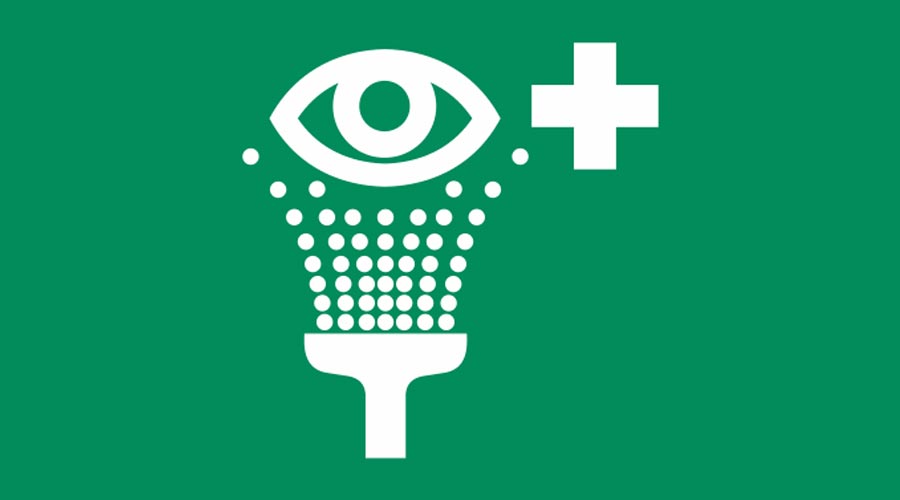
Bradley Company is offering guidelines for preparing facilities with plumbed emergency eyewash and safety shower equipment.
Emergency eyewashes and safety showers should be used in any facility where there is a potential for exposure to hazardous materials or substances, such as chemical, flammable and particulate hazards. Immediately rinsing affected areas with eyewashes and safety showers dilutes and flushes away the irritants, reducing risk of injury or further damage.
“It is the responsibility of facility and operations management to ensure emergency showers and eyewashes are in compliance with ANSI/ISEA guidelines to deliver the best protection for employees,” says Ryan Pfund, senior product manager, Bradley. “This means the equipment must be properly maintained and in good working order, located near all hazards, and able to dispense properly tempered water.”
Identify hazards. Start with a site evaluation to identify at-risk areas, potential hazards and emergency needs. Consider factors like product location, accessibility, water supply, water temperature and equipment selection.
In addition to Safety Data Sheets (SDSs) for each hazardous chemical in the facility, it’s important to reference ANSI/ISEA Z358.1–2014, which cites installation, testing, performance, maintenance, training and usage requirements for emergency equipment.
Some product manufacturers offer complimentary site surveys to help facility managers determine proper selection, placement and usage of fixtures.
Know equipment options. Fixture selection depends on the hazards in your facility:
Emergency eyewash stations are effective for spills, splashes, dust or debris likely to affect only the eyes.
Emergency eye/face wash stations are used when the entire face is at risk from spills, splashes, dust and debris, and are able to irrigate the eyes and face simultaneously.
Drench showers are used when larger areas of the body are at risk. These overhead showers flushes a larger portion of the body but is not appropriate for the eyes (a combination eyewash and drench shower may be used to simultaneously flush the eyes and rinse larger areas of the body).
Non-plumbed, self-contained eyewash fixtures are a good choice when there is no access to a plumbed water source, self-contained units can be used. These flexible systems can be portable and gravity fed.
Pinpoint proper placement. After identifying potential hazards and selecting equipment, product locations should be positioned close to hazards to ensure they are easily seen and accessed. Here are some key ANSI/ISEA guidelines for placement:
• Fixtures must be within 55 feet of a potential hazard and take no more than 10 seconds to reach. Access to the fixture must not be obstructed.
• Equipment must be on the same level as the hazard. A door can be considered an obstruction; however, if the hazard is not caustic, one door can be present provided it swings in the direction of travel and it cannot be locked.
• The height of the eyewash flow pattern should be between 33 and 53 inches, and measured from the floor to the water flow.
• If a potential chemical spill in an area can affect multiple workers, enough fixtures should be in place for all to access.
“Keep in mind that emergency equipment manufacturers offer free job site evaluations to help with product selection, equipment maintenance and testing, employee training placement of fixtures and ANSI compliance,” says Pfund. “It’s a good idea to get an outside expert’s perspective to help you stay on top of inevitable work-site changes that may impact the proper usage and effectiveness of your emergency equipment.”

 The Down and Dirty on Cleaning in Virus Season
The Down and Dirty on Cleaning in Virus Season How Surfactant Use is Expanding in Commercial Cleaning
How Surfactant Use is Expanding in Commercial Cleaning